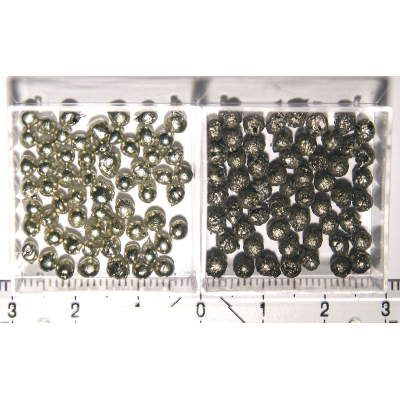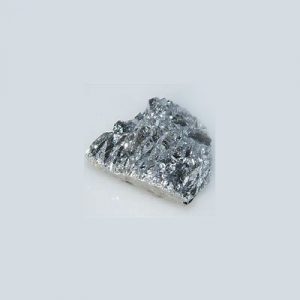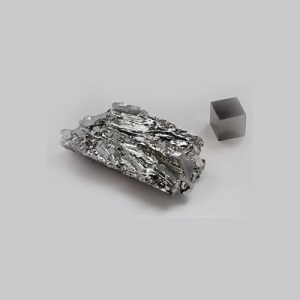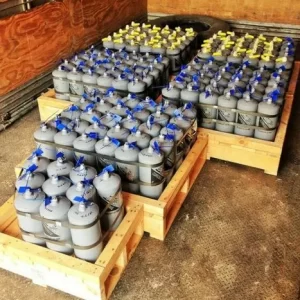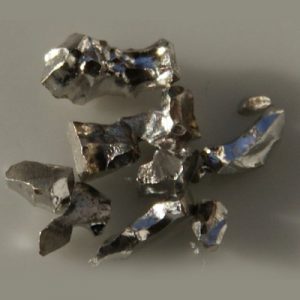Tin (Sn)
| Properties | |
| Symbol | Sn |
| Appearance | Silvery white/gray |
| Atomic Number | 50 |
| Atomic Weight | 118.7 g/mol |
| Group | 14 |
| Period | 5 |
| Block | p-block |
| Phase at STP | solid |
| Melting Point | 505.08 K |
| Boiling Point | 2875 K |
| Density | 7.65 g/cm3 |
Tin is a silvery metal that characteristically has a faint yellow hue. Pure tin after solidifying keeps a mirror-like appearance similar to most metals. However, in most tin alloys (such as pewter), the metal solidifies with a dull gray color. It is obtained chiefly from the mineral cassiterite, which contains stannic oxide, SnO2. Tin has 10 stable isotopes, the largest number of stable isotopes in the periodic table. It has two main allotropes: at room temperature, the stable allotrope is β-tin, a silvery-white, malleable metal, but at low temperatures, it transforms into the less dense grey α-tin, which has the diamond cubic structure. Metallic tin does not easily oxidize in air.
Tin is used in many alloys, most notably tin / lead soft solders, which are typically 60% or more tin, and in the manufacture of transparent, electrically conducting films of indium tin oxide in optoelectronic applications. Another large application for tin is corrosion-resistant tin plating of steel. Because of the low toxicity of inorganic tin, tin-plated steel is widely used for food packaging as tin cans.

